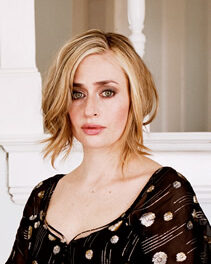With the disbanding of the long-standing, pioneering Beaux Arts Piano Trio in 2008, it was heartening to hear a wonderful ensemble to be added to the roster of the well-established Eroica Trio and Kalichstein-Laredo-Robinson Trio. The latter groups have concertized frequently across our state. It was a pleasure to review again the Amelia Piano Trio, whose concert ended the enterprising Classical Concert Series, supported by the Moore County Arts Council. Each time I have heard the Amelia Trio, they have brought a surprise. For their 2005 concert in Greensboro, they were joined by Wang Guowei, an erhu virtuoso. On this occasion, violinist Anthea Kreston introduced each work with brief, insightful comments from the Sunrise Theater stage, but she saved a big surprise for after intermission.
One of the greatest twentieth century piano trios is the soul-shattering Trio in E minor, Op. 67, by Dmitri Shostakovich (1906-75), but when he was 17, the composer wrote a short one-movement Trio No. 1 in C minor, Op. 8, in which he applies classical structures with great assurance. I am amazed how much of the tonal world of the mature composer can be heard in this work. Within a few melancholy and stark opening piano notes, one hears suggestions of the sound-world that became greatly expanded in his most personal mature works. Shostakovich said he composed many of these pieces for “the drawer,” only to be pulled out after Stalin’s reign of terror. Some loud piano chords hinted at future sardonic scherzos. However, a gorgeous cello melody supported by keyboard, is a purely beautiful episode unlike anything I can recall hearing in his quartets, symphonies, piano works, or songs. The Amelia musicians played Op. 8 with fine balance and stylish phrasing. Cellist Jason Duckles produced a full, warm tone and a seamless melodic line.
Violinist Kreston recounted her first experience with contemporary music as a student at the Saratoga Music Festival, working with composer John Harbison (b.1938) on one of his string quartets. When the Amelia Trio was able to do so, the members commissioned Piano Trio No. 2, “Short Stories,” from Harbison. Unlike his Trio No. 1, which Kreston said is written in “a harsh New York style,” this piece is more lyrical. It consists of four unrelated movements: “Tale,” “Ballad, “Rumors and Reports,” and “Enigma.” The first movement starts not with all three musicians playing but with repeated episodes in which each string player has a duet with the keyboard followed by a piano solo. A perpetual motion based on an 8th note dominates the third movement. The last movement features “prepared piano” technique briefly. The Amelia Trio made a strong case for Harbison, conveying the “experimental and unpredictable quality of Haydn” that the composer sought to emulate.
Frédéric Chopin (1810-49) composed his Trio in G minor, Op. 8, in 1829, before he left Poland for Paris; it was published in 1832. Violinist Kreston said she followed up reports of Chopin’s alluding to replacing the violin part with a viola. (Chopin’s letter is quoted in Emanuel Ax’s note for Sony CD SK 53112.) Chopin wrote that he should have written the violin part for viola “as the first string predominates in the violin and in my trio is used hardly at all. The viola would, I think, accord better with the cello.” Before Kreston joined the Amelia Trio, she played viola in a string quartet. Her ease with the viola has led her to take up Chopin’s suggestion. She speculated that the awkward scoring for the violin was responsible for the relative neglect of Op. 8. Another feature of her adaptation is the increased virtuosity of the part, using the viola’s higher strings. She told me after the concert she had only needed to modify the score downward about eight times in sections dominated by the piano. The Amelia Trio’s performance was a revelation. I have heard the work in live performance perhaps three times in thirty years, played most often by ad hoc faculty or festival musicians. A fine period instrument performance aside, the keyboard always struck me as the focus of the work. Pianist Rieko Aizawa certainly played all the shimmering arpeggios and suggestions of dances gorgeously, with crystalline clarity and a glowing tone. With the more natural blending quality of the viola, the strings’ parts took on a wholly new quality. I hope the Amelia Piano Trio will record this version, which deserves wide exposure. Perhaps some living composer, someone whose style is lyrical and tonal, could be commissioned for this winning combination of piano, viola, and cello.












